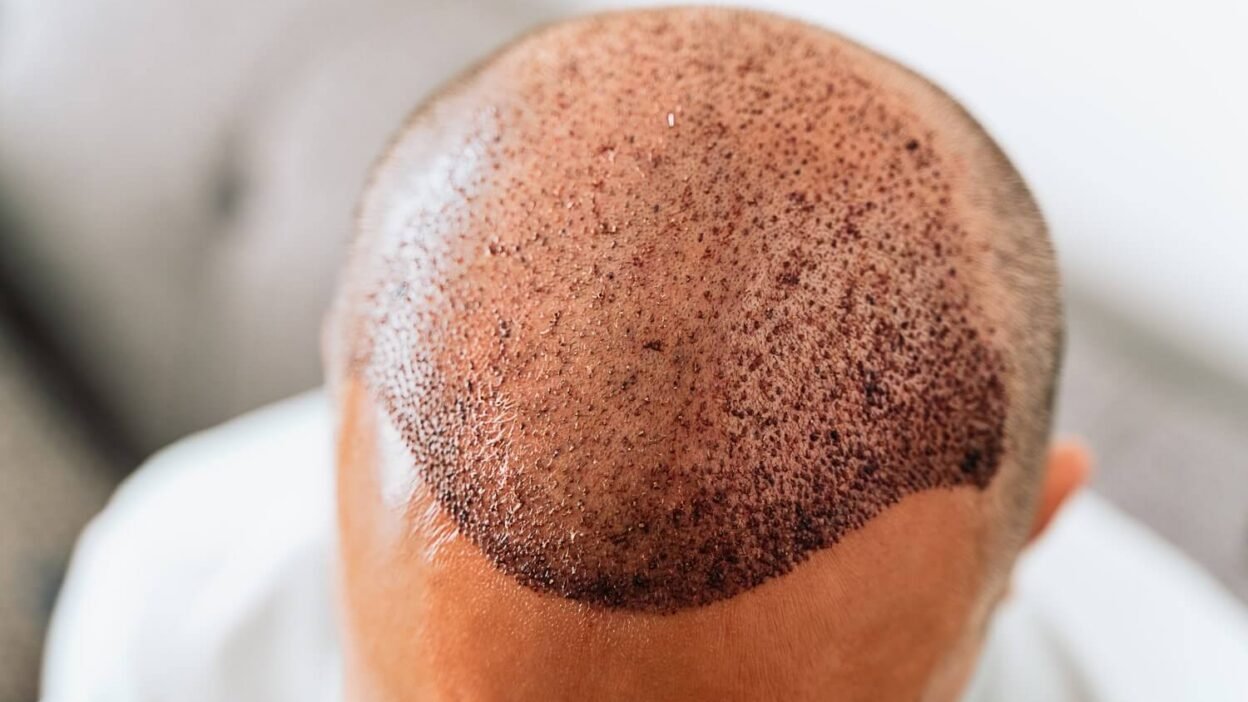Determining the number of hair grafts required for a hair transplant is a common concern for individuals considering this procedure. It’s essential to understand that the number varies significantly based on individual factors, including the extent of hair loss, the desired density, and the donor hair availability. The goal of a successful hair transplant is to achieve a natural look that aligns with the patient’s expectations, and this requires careful planning regarding graft quantity.
Hair Transplant in Dubai has gained popularity among those seeking advanced, reliable hair restoration solutions. As a leading destination for cosmetic procedures, Dubai offers state-of-the-art facilities and experienced surgeons dedicated to customized treatment plans. When planning your hair transplant, understanding how many grafts are needed forms a crucial part of your consultation process.
Factors Influencing the Number of Hair Grafts Needed
Extent of Hair Loss
The severity of hair loss is a primary factor in determining graft requirements. Hair loss patterns are classified using standardized systems, like the Norwood scale for men and the Ludwig scale for women. Mild hair loss may require fewer grafts to restore density, whereas extensive baldness might necessitate a larger number of grafts to cover the affected area adequately.
Donor Hair Density
The number of available donor hairs influences the total graft count. Typically, the donor area—commonly the back and sides of the scalp—provides healthy hair follicles that can be transplanted. The density and quality of these donor hairs determine how many grafts can be safely harvested without compromising scalp health.
Desired Density and Hairline Design
Patients often have specific aesthetic goals, such as a natural hairline or increased overall density. Achieving these goals involves strategic placement of grafts, which can impact the total number needed. A highly dense look requires more grafts, while a subtle restoration might need fewer.
Hair Texture and Thickness
Thicker, coarser hair tends to provide more coverage per graft, potentially reducing the number needed for the desired density. Conversely, finer hair may require more grafts to achieve the same visual fullness.
Types of Hair Grafts and Their Implications
Follicular Unit Transplantation (FUT)
In FUT, a strip of scalp tissue is removed, and individual follicular units are dissected for transplantation. This method allows for the harvesting of a larger number of grafts in a single session, suitable for extensive hair restoration.
Follicular Unit Extraction (FUE)
FUE involves extracting individual follicular units directly from the donor area using specialized tools. It’s minimally invasive and ideal for patients seeking smaller sessions or those who prefer to avoid a linear scar. The number of grafts achievable depends on the donor area’s size and hair density.
Combination Approaches
Some clinics may combine FUT and FUE techniques to maximize graft yield while minimizing donor site trauma. This approach can be tailored based on individual needs to achieve optimal results.
Typical Range of Grafts Required
Small-Scale Restoration
For minor corrections or filling in thinning areas, patients may need approximately 500 to 1,500 grafts. Such procedures are often sufficient for restoring a subtle hairline or adding density to specific zones.
Moderate Hair Loss
Individuals with moderate hair loss typically require between 1,500 and 3,000 grafts. This range allows for significant coverage and a natural appearance, especially when addressing frontal and crown areas.
Extensive Hair Loss
Those experiencing advanced baldness may need 3,000 to 4,500 or more grafts. Achieving a dense, natural look in such cases involves multiple sessions and meticulous planning.
Hair Transplant in Dubai offers tailored solutions for all these needs, ensuring each patient receives a personalized treatment plan aligned with their hair restoration goals.
Planning Your Hair Transplant: How Many Grafts Do You Need?
Consultation and Evaluation
A thorough assessment by a qualified specialist is vital. The evaluation considers scalp laxity, donor hair quality, hair loss pattern, and patient expectations. During this stage, a detailed plan is developed, including the estimated number of grafts required.
Customized Treatment Strategy
Every individual’s hair restoration journey is unique. The specialist designs a treatment plan that balances the number of grafts, donor site health, and aesthetic goals. The plan might involve multiple sessions to achieve optimal density and coverage.
Setting Realistic Expectations
Understanding the typical number of grafts needed helps set realistic expectations. It’s important to communicate desired outcomes clearly and recognize that achieving a natural look often requires a strategic distribution of grafts rather than just maximizing quantity.
The Importance of Realistic Expectations and Personal Goals
One of the most vital aspects of planning a hair transplant is aligning the procedure with your personal goals and expectations. Every individual has a unique hair loss pattern, scalp condition, and aesthetic desire. Understanding what can realistically be achieved with a given number of grafts helps prevent disappointment and ensures satisfaction with the final results.
Setting Practical Goals
While many patients dream of a full head of thick, natural hair, achieving this depends on the available donor hair and the extent of hair loss. A skilled surgeon can help you set attainable goals, such as restoring a natural hairline, filling in thinning areas, or increasing overall density. Recognizing these realistic outcomes allows for a customized plan that maximizes your results within your individual parameters.
Balancing Density and Natural Appearance
A common misconception is that more grafts automatically lead to better results. However, overloading the scalp with grafts can sometimes produce an unnatural look or cause donor site issues. The key is to balance the number of grafts with the natural hair density and the scalp’s capacity to support healthy growth, ensuring a harmonious and natural appearance.
The Role of Hairline Design in Graft Planning
Importance of a Natural Hairline
The hairline is often the focal point of a youthful and natural look. Designing a hairline involves artistic skill to create a shape that complements facial features, age, and gender. The number of grafts allocated to the hairline is carefully calculated to produce a realistic, undetectable transition from forehead to scalp.
Customizing the Hairline
Each individual’s hairline design is unique, based on facial structure and aesthetic preferences. Some may prefer a softer, rounded hairline, while others opt for a more defined or receding look. The chosen design influences graft count, with more grafts needed for dense, well-defined lines, and fewer for softer, natural transitions.
Multiple Sessions and Staged Transplantation
Why Multiple Sessions Are Beneficial
For extensive hair loss cases or when aiming for high density, multiple transplant sessions may be recommended. Spreading the grafts across different procedures allows for better scalp recovery, reduces donor site strain, and provides a more natural buildup of hair density over time.
Planning for Future Growth
A staged approach also considers future hair loss progression. The specialist can plan initial graft placement to ensure coverage and density while leaving room for additional grafts in subsequent sessions if necessary. This strategic planning results in a balanced, natural look that ages gracefully.
Advanced Techniques to Maximize Results
Use of Artistic Techniques
Modern hair transplant techniques incorporate artistic methods to optimize hair placement, direction, and density. These techniques involve meticulous graft distribution and angle adjustment to mimic natural hair growth patterns, ensuring seamless integration with existing hair.
Combining Techniques
Some patients benefit from combining FUT and FUE methods, especially when aiming for maximum graft yield with minimal donor site impact. This hybrid approach can be tailored to individual needs, allowing for a higher total number of grafts and better coverage.
Incorporating PRP and Other Adjuncts
Platelet-rich plasma (PRP) therapy and other adjunct treatments can enhance hair growth and graft survival. While not directly affecting the number of grafts needed, these treatments complement the procedure and promote healthier, thicker hair post-transplant.
Post-Transplant Growth and Maintenance
Hair Growth Timeline
Understanding the timeline of hair growth post-transplant helps set realistic expectations. Initial shedding of transplanted hairs is normal, followed by a period of dormant growth. New hair begins to grow noticeably around 3-4 months, with full results visible after approximately a year.
Maintenance and Follow-up
Maintaining transplanted hair involves proper scalp care, nutrition, and possibly medical treatments like minoxidil or finasteride, depending on individual needs. Regular follow-up appointments allow the surgeon to monitor progress and address any concerns promptly.
Why Choose Hair Transplant in Dubai?
State-of-the-Art Facilities
Dubai boasts some of the world’s most advanced clinics equipped with cutting-edge technology and modern infrastructure. This ensures precise, minimally invasive procedures with high standards of safety and hygiene.
Experienced Surgeons and Personalized Care
The city is home to highly trained, internationally qualified surgeons who prioritize personalized treatment plans. They consider individual features, hair loss patterns, and aesthetic goals to determine the optimal number of grafts for each patient.
Confidentiality and Comfort
Many patients prefer Dubai for its discreet, comfortable environment that respects privacy and offers a seamless experience. This makes it an ideal destination for those seeking high-quality hair restoration services abroad.
Holistic Approach
Clinics in Dubai often adopt a holistic approach, combining advanced surgical techniques with supportive therapies to maximize results and ensure patient satisfaction.
Final Thoughts
Deciding on the number of grafts needed for a successful hair transplant in Dubai involves a comprehensive assessment of your hair loss pattern, donor hair availability, aesthetic goals, and scalp condition. It’s a highly personalized process that requires expert consultation and meticulous planning.
By understanding the factors that influence graft count and the techniques available, you can actively participate in your treatment planning, setting realistic expectations and achieving natural, lasting results. Whether you need a subtle correction or full scalp coverage, a tailored approach ensures your hair restoration journey is successful, satisfying, and confidence-boosting.
Conclusion
The question of how many hair grafts are needed for a hair transplant is highly individualized. It depends on various factors, including the extent of hair loss, donor hair availability, desired density, and aesthetic goals. Consulting with experienced specialists who can assess these parameters and create a personalized plan is essential for achieving natural and satisfying results.
Hair Transplant in Dubai continues to be a preferred choice for many seeking advanced, tailored hair restoration solutions that meet their specific needs. Whether you require a small correction or a comprehensive restoration, understanding the graft requirements ensures you are well-informed and prepared for your hair transplant journey.
FAQs
1. How do I know the number of grafts I need for my hair transplant?
A professional consultation with a hair restoration specialist is essential. They will evaluate your hair loss pattern, donor area, and aesthetic goals to determine the appropriate number of grafts tailored to your needs.
2. Can I get a hair transplant with fewer grafts and still see results?
Yes, even a smaller number of grafts can significantly improve appearance, especially when targeting specific areas like the hairline or thinning zones. The focus is on achieving natural results rather than just quantity.
3. Is it better to have multiple sessions or a single large session?
The decision depends on individual factors and the extent of restoration needed. Sometimes, multiple smaller sessions can provide better coverage, minimize donor site impact, and allow for gradual density buildup.
4. How long does it take to see results after a hair transplant?
Initial signs of new hair growth typically appear within 3 to 4 months post-procedure. Full results, including optimal density, are usually visible after 9 to 12 months as transplanted hairs mature and thicken.
If you’re considering a hair transplant, understanding how many grafts are needed is a vital step toward achieving your desired look. Proper planning and expert guidance ensure a natural, lasting result that boosts confidence and renews your appearance.




